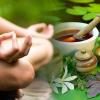CYBERMED LIFE - ORGANIC & NATURAL LIVING
CYBERMED LIFE - ORGANIC & NATURAL LIVING
 Integrative Medicine: Complementary medicine (CM) or integrative medicine (IM) is when alternative medicine is used together with functional medical treatment, in a belief that it improves the effect of treatments. However, significant drug interactions caused by alternative therapies may instead negatively influence treatment, making treatments less effective, notably cancer therapy.
Integrative Medicine: Complementary medicine (CM) or integrative medicine (IM) is when alternative medicine is used together with functional medical treatment, in a belief that it improves the effect of treatments. However, significant drug interactions caused by alternative therapies may instead negatively influence treatment, making treatments less effective, notably cancer therapy.
Both terms refer to use of alternative medical treatments alongside conventional medicine, an example of which is use of acupuncture (sticking needles in the body to influence the flow of a supernatural energy), along with using science-based medicine, in the belief that the acupuncture increases the effectiveness or "complements" the science-based medicine.